Overnight Sourdough Bread Recipe – Easy Enough For Beginners!
This post may contain affiliate links. Please read our Disclosure Policy.
Learn how to make delicious overnight sourdough bread at home with a step-by-step video that’s perfect for the beginner and that your family will love.

Overnight Sourdough Bread recipe is the perfect recipe to learn baking with a sourdough bread starter. Our step-by-step instructions and video will have you creating an amazing loaf of bread at home in no time.
This Sourdough Bread recipe couldn’t be easier to make and it’s a lot quicker compared to other sourdough bread recipes from starters.
This 500g homemade sourdough recipe has a tender crumb with a slightly sour flavor surrounded by a beautiful crisp crust that has that pull you want in artisan bread.

Hello, Julie. Just wanted to say thank you for sharing your overnight sourdough recipe as it really works well for me, a lot of people have shared their methods and this one is simply the best one I have come across so far. So thank you again!”
Kris T
What is Sourdough Bread
Sourdough bread is made by fermentation of dough using naturally occurring lactobacilli and yeast. Sourdough bread has a mildly sour taste not present in most bread made with baker’s yeast and keeps better than other bread due to the lactic acid produced by the lactobacilli. Wikipedia
What is different about sourdough bread?
The difference is in how they are made. Regular bread is made using store-bought yeast that reacts with gluten, making the dough rise. Sourdough bread is made with a “starter“. This starter is made from a combination of yeast and bacteria growing inside a paste made of flour and water.
Make your own starter!
Need help with your sourdough starter? Our Complete Sourdough Baking Guide covers everything from creating a starter from scratch to maintaining it long-term, plus advanced techniques and troubleshooting.
Health Benefits of Sourdough Bread
The fermentation that occurs from using a starter has been shown to lower blood sugar, be easier to digest and can even be tolerated by gluten-resistant individuals.
However, that’s not to say it is gluten-free. Sourdough bread contains higher levels of folate and antioxidants than other bread. Healthline is a very thorough reference regarding the health benefits of sourdough.
Ingredient Tips:
- Bubbly starter – I recommend feeding your starter and letting it sit out at room temperature 4 to 6 hours or until it increases in volume by about 30% and passes the float test.
- If your dough is runny it can be because your starter was actually starving when you used it.
- Bread Flour – Bread flour has a higher protein content than AP flour. That higher protein provides more structure to your loaf.
- If you substitute, they will both be delicious, and the texture will be the same but you may find the loaf made with AP flour balloons out more or doesn’t rise as high.
- Water – There’s a lot of controversy regarding water in bread making. Some experts say if you can drink it you can use it to bake with. Other experts say the chlorine can inhibit yeast activity.
- Mineral content (hardness) can reduce extensibility (elasticity and ability to stretch) of the dough.
- Salt – I use fine sea salt. It is easier to incorporate and dissolve than a coarser salt.

The above pictures from top left to bottom right.
- The freshly fed starter is thick.
- The Bubbly starter is ready. when bubbly and passes the float test.
- 1st quick knead just to combine ingredients (about 1 minute). The dough is thick and heavy.
- 2nd quick knead after a 30-minute rest. The dough is softer and smoother.
- Dough after 8 hours is full of air bubbles.
- Dough after final delicate knead is smooth and silky.
Absolutely! We love adding dried fruit such as apricots or cranberries, chopped nuts, cheese, olives, or herbs such as rosemary or thyme.
We recommend that you start by adding no more than 20%. So for this 500-gram loaf that would be
500 x 20% = 100 grams. You shouldn’t have to adjust your baking time.
Be careful that you don’t add a lot of moisture. Semi-hard cheeses such as cheddar shredded or diced into smaller pieces work well. Drain fresh fruit or olives of excess juice.
Sourdough Baking Guide is a comprehensive resource covering starters, fermentation, shaping, scoring, troubleshooting, and advanced baking methods.
Recipes using a bread starter
- Multi-Grain Wheat Bread Recipe
- Spelt Sourdough Bread
- Sourdough Sandwich Bread using Bread Starter
- Multi-Grain Wheat Bread
- 750gr All-Purpose Flour Sourdough.
Pro tips for Overnight Sourdough Bread
Resting times
Want to save this recipe?
I'd like to receive more tips and recipes from Hostess At Heart!
Don’t let bread rule your life! Here are some resting times that may help you to bake according to your schedule
- Counter rise – Written as is, this recipe has a counter rise of 3 to 8 hours. I’ve shaped it and let it rest in a banneton or you can carefully shape it just before baking it. The rise time is variable. If you have a warm kitchen, it may be ready sooner. Press your thumb into the dough, and if it bounces back slowly, it’s ready to bake. If it bounces back quickly, it needs a little more time to rise. If it stays dented, it’s probably over-proofed.
- Refrigerator proofing – If you don’t choose to bake your bread at the 3 to 8 hour counter proof, we recommend a 90 minute to 4 hour counter proof. Shape the dough and place it seam-side up into a banneton basket or a bowl lined with a kitchen towel that’s dusted with flour. We like dusting ours with a 50/50 mix of wheat flour and rice flour. We’ve actually left our bread in the refrigerator for up to 18 hours with no problems.
- When you’re ready to bake, remove the shaped dough from the refrigerator and let it sit on the counter while your oven preheats. Place it in the dutch oven, score it, and bake as usual.
If you do the full counter proof and then refrigerate the dough, it will be over-proofed. For that reason, try a much shorter counter rise and then refrigerate it.
More helpful tips
- Feed your starter earlier in the day. When it’s bubbly, do the test float. If it’s runny, it’s used up all its energy and needs to be fed again before you can use it. To see if your starter is ready, put a small amount in a bowl or cup of water. If it floats, it’s ready!
- Your bread can be cooked in a cold Dutch oven but I like the color and oven rise I get from preheating my lidded pot.
- To properly bake the bread we rely on an instant-read thermometer. The bread is finished baking when it reaches an internal temperature of 205ºF to 210ºF.
- This bread freezes beautifully. I wrap it in plastic wrap or a ziplock bag and then heavy-duty foil.
- Each time you bake, we keep a notebook and write down anything we do differently such as resting time, baking time, or adding additional ingredients. It’s so difficult to remember what worked the best unless we can look back and see what we were happy about or wanted to do differently the next time. This will also help you to determine what resting times work for you.
YOU MAY NEED
The following are affiliate links. Hostess At Heart is a participant in the Amazon Services LLC Associates Program, an affiliate advertising program designed to provide a means for us to earn fees by linking to Amazon.com and affiliated sites. You can read my full disclosure.
6 Quart Enameled Cast Iron Dutch Oven. – I love this Dutch oven. I have three that are triple the price of this one and it’s my favorite. It bakes my bread perfectly and makes a mean ragu recipe.
Zatoba 1003 Black Walnut Bread Lame Decorative Dough Slasher, 2x2x8 inches – I started out with a lesser quality lame and while this one isn’t expensive it’s definitely better quality and has made a prettier slash in my dough. You can also use a sharp knife.
Instant-read Thermometers aren’t just for meat! I use them to know when my bread is baked. I bake until I get an internal temperature of 205º F to 210º F or anywhere in between.
I have two books (out of several) that I’ve learned so much from. I recommend them exclusively to help in your bread experience. They are easy to read and will help you get that beautiful loaf on the table!
This is a 500gr loaf of bread which isn’t large. Baking bread is all about percentages. If you want a larger loaf, you can adjust the “Servings” in the recipe card and it will calculate your ingredients. (Thank you, Daniel, for this question!)
I hope you enjoyed this delicious recipe as much as we do. Drop me a comment below, and don’t forget to give it a star rating. ⭐⭐⭐⭐⭐. Your comments and ratings help others decide if this recipe is for them too.
Conversions are listed below the recipe card
Conversions for Overnight Sourdough Bread recipe
We realize that many of you aren’t comfortable using a scale. The closest conversions are the following.
- 4 cups flour
- 1 1/4 cup water
- 2/3 cup starter
- 1 1/2 tsp salt
A disclaimer is that I’ve never made this recipe without weighing the ingredients so I can’t guarantee or possibly troubleshoot any problems you may have with the recipe.
If you like this recipe you may enjoy these too
- Homemade Crusty Bread recipe
- 6 Ingredient Simple Classic Italian Bread Recipe
- Soft Buttermilk Sandwich Bread
- Simple Ciabatta Bread Recipe – Made 2 Ways!
- Spiced Apple Star Bread
This bread was made possible by the resources and recipes shared by Elaine, Selma, and Celia! Please visit all three of these blogs for amazing bread information!

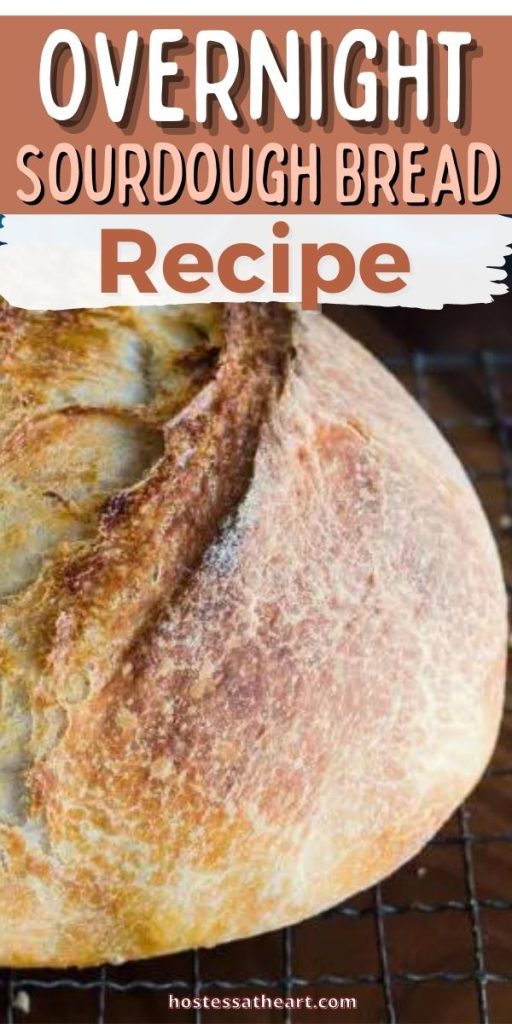
Did you enjoy this recipe? Don’t forget to pin it for later and follow me on Pinterest for more delicious recipes like this one!

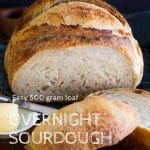
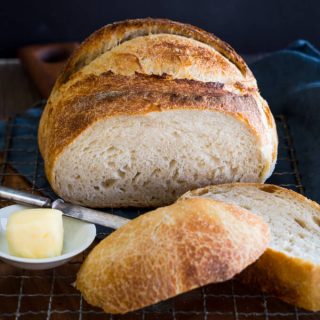

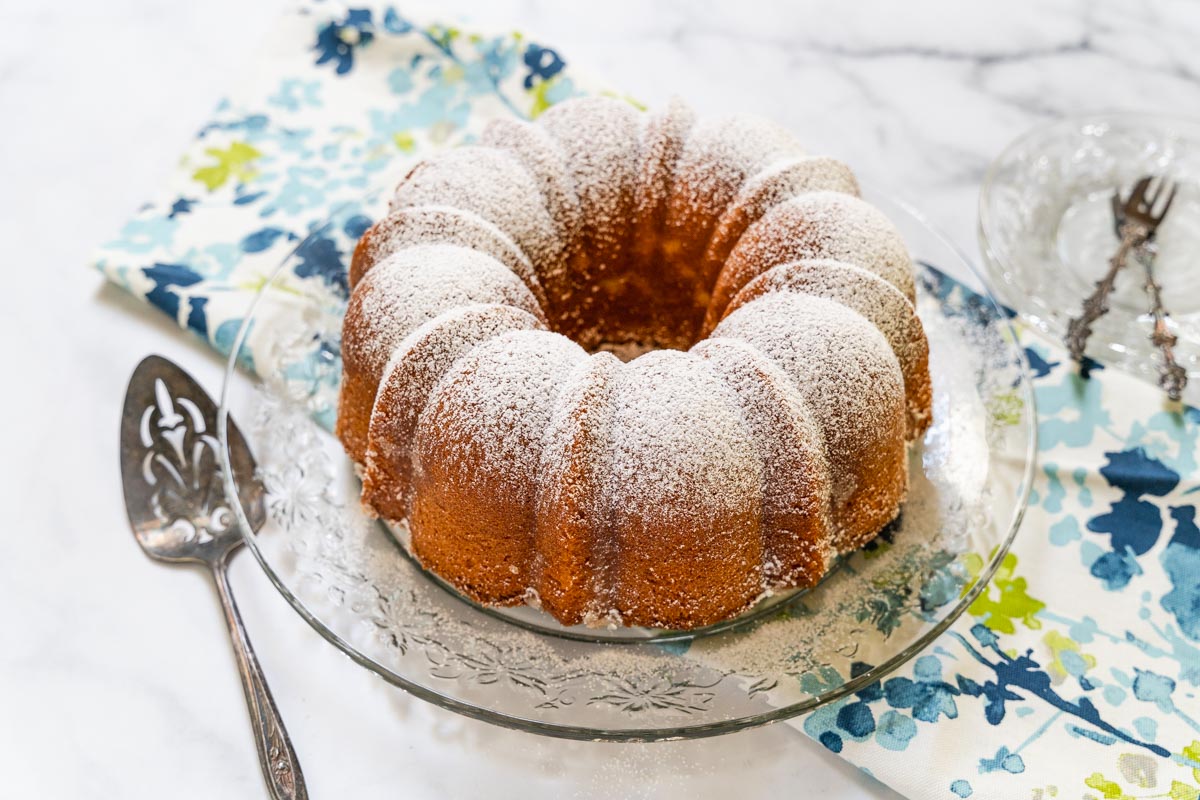
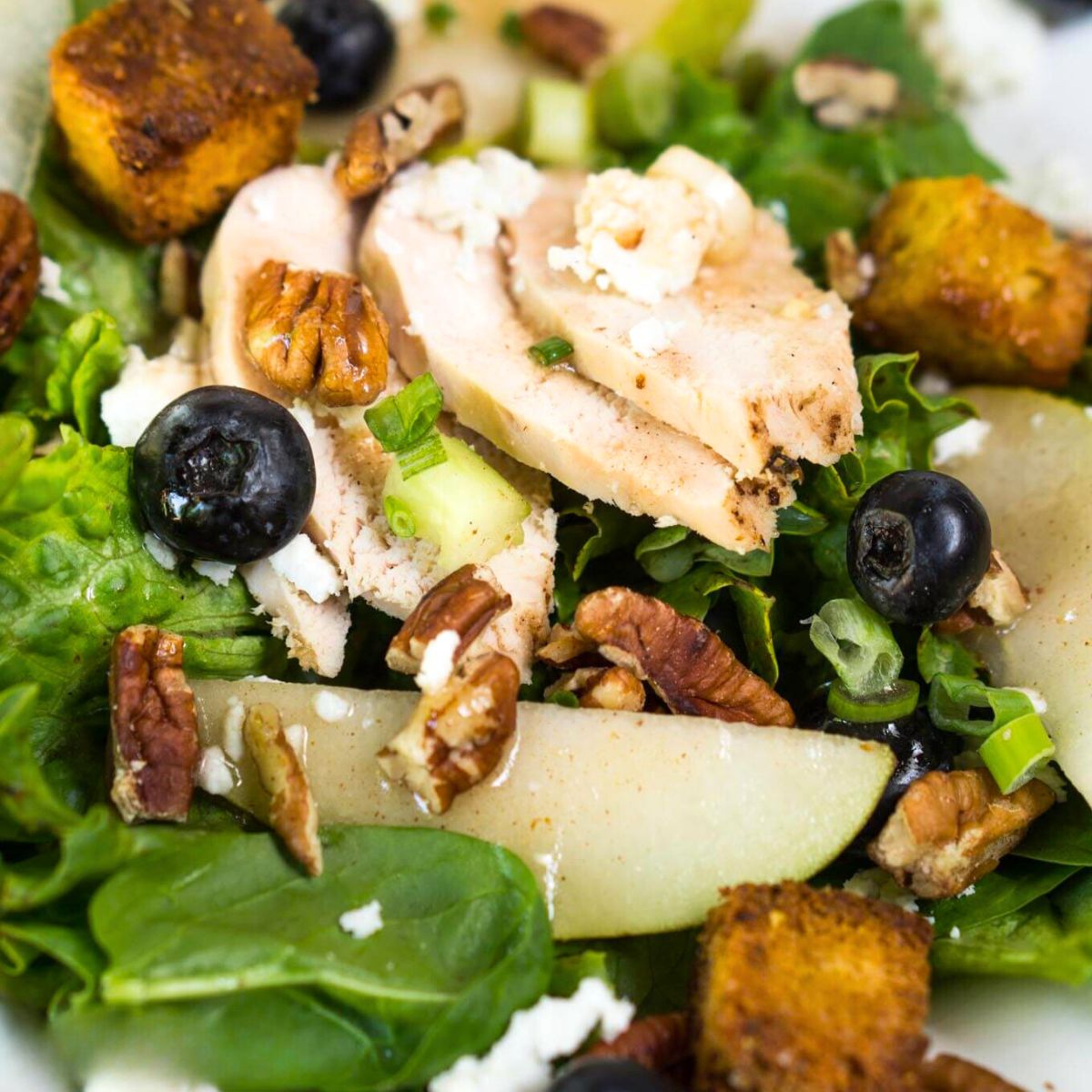


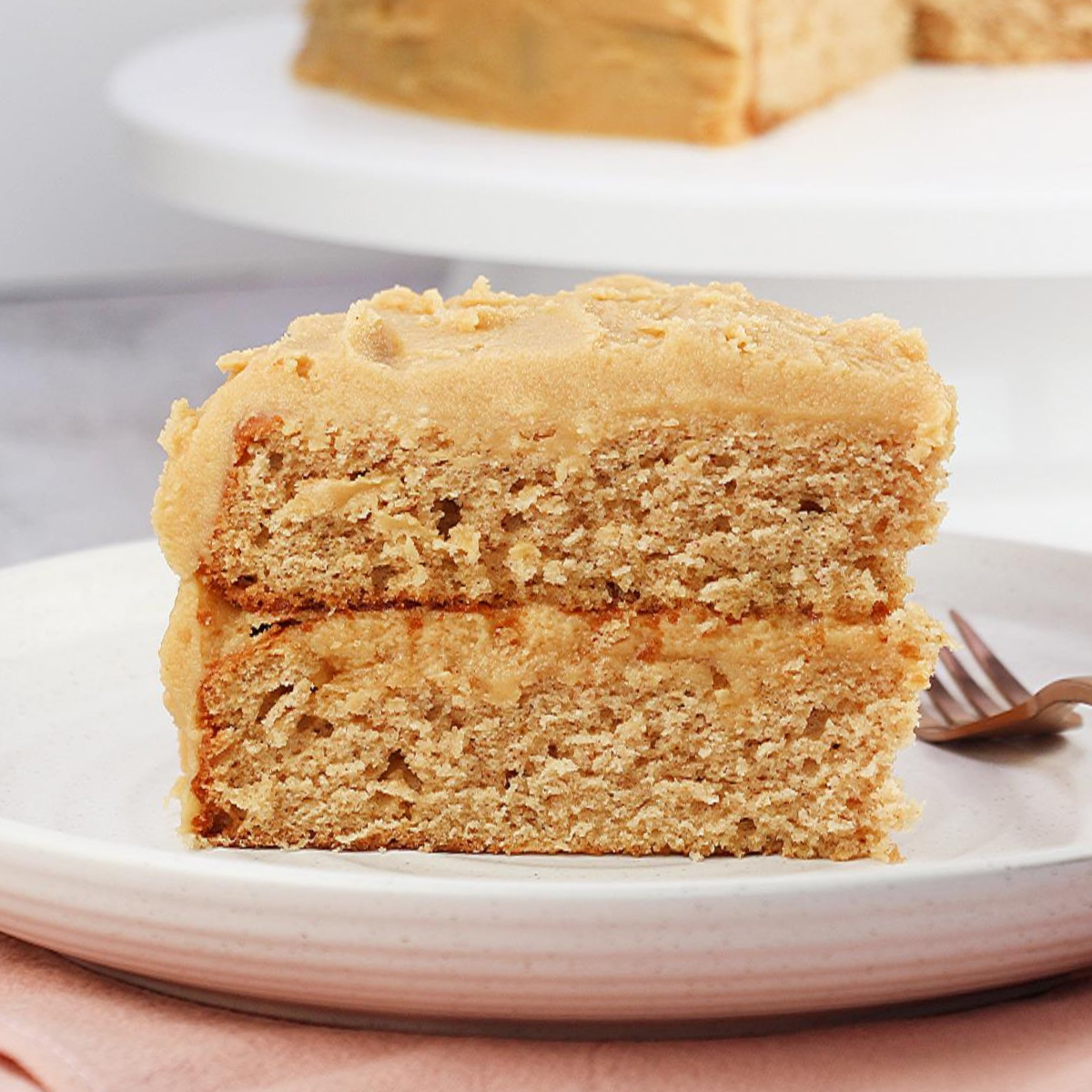
Love how just under the title it says “no kneading”, then the recipe says you have to knead it 3 times.
Hi Nanci, It should say almost no kneading. The kneading that I do with this recipe is more like shaping it. Many other sourdough recipes require kneading over a 4 hour period.
Trust me, this isn’t kneading. There are sourdough recipes that require a series of stretch and pulls that go over several hours. This is by far the easiest sourdough recipe and I’ve always had success with it.
Thank you, Katherine for your input. I’m sure others will find it helpful.
You mention putting the dough on the counter, then you are putting the dough on parchment into dutch oven.
What about getting the dough from the counter to the parchment ?
Hi, Rich, let me clarify. There’s a couple different scenarios here. If you shape the loaves and place them in a bowl or banneton, then refrigerate overnight, you don’t shape them again so the next day they go right from the banneton to the dutch oven. That’s what I do almost all the time now. If you let them raise overnight on the counter and then shape before baking, your dough will not be that sticky so you can gently take the shaped dough and put it into the dutch oven. Does this help? Please let me know if you have questions.
My sourdough is not rising overnight please help
Hi Sofia! Is it overly cold where you’re at? Did you do the float test before mixing in your starter? Did you rise at room temperature or in the refrigerator?
Hi Bread-Queen Julie! I could do with your expert advice, please. I want to try baking my loaf in a loaf tin. Do you have any suggestion as to what time and temperature I should use with an un-lidded tin, please? Many thanks.
Ha, thank you, Suzi! Take a look at this Sourdough Sandwich Bread recipe. It’s a little different than this one. However, you can make this bread recipe in a 9×5 loaf pan or two 8×4 loaf pans. Bake for the first 30 minutes tented with aluminum foil.Uncover and bake for another 10 to 15 minutes or until you get an internal temp of 205 to 210. Since you’re not using a dutch oven, your crust won’t be as crispy. You can brush it with butter once it comes out of the oven if you want a soft crust for sandwiches. Let me know how it goes, Suzi.
As expected, my family were disappointed with the soft crust. The bread itself was lovely though. I’ve ordered a lidded cast iron loaf pan to try out. Thanks for the continued support, BQ Julie. ❤️
Hooray – the cast iron loaf tin worked well. It’s a game-changer!
Thank you, Suzi!
My dough was far too sticky during the shaping process the following morning 🙁 I did a few stretch and folds and covered it back up and not sure how to proceed. Besides being too sticky to shape, it did double in size and had bubbles.
If it doubled in size and has bubbles, I would carefully shape it and then bake it. There are so many variables. What you might try next time is to shape it and then bake it without having to shape it the next morning.
I’m leaving a comment just to let you know that this was the first sourdough bread recipe I ever tried back in 2019. And it’s the only one I always come back to, especially now with my two toddlers who ask me to make them more sourdough (which I love to hear!). Thank you, thank you! 🙂
We’ve tried a few recipes after starting our own sourdough journey. My daughter and I are the cooks and bakers of the family and also work outside the home, so many of the recipes although turned out good, we have been on the lookout for something easier and had a schedule that worked better for us. This overnight rise was just the thing! This is our second time trying it. The first time we didn’t have many bubbles in the crumb, but it tasted delicious and had a wonderful shape and rise. Made some awesome grilled cheese!
Thanks for sharing this wonderful recipe! We’ll be using it again! Btw, we’re also at 6800 ft altitude.
Hi Julie Bee! I’m so glad that you’re enjoying this recipe. I love sourdough peanut butter toast in the morning. Yum!
For that altitude I suggest increasing the heat of you oven to 500F for preheating and dropping it to 450F once you put the bread in the oven. You may also have to increase the baking time just a bit. Use the instant read thermometer and bake until the internal temp is about 205F.
Thank you so much! We’ll try that! And, I love peanut butter toast in the morning too!
This is the recipe I chose for the first loaf I ever made, and I’ve stuck with it! It’s so much simpler than any others I’ve heard of! I just bake it in a pie plate, and it comes out great.
Thank you so much, Audrey! This is the first one that propelled me into sourdough and one that I still bake most of the time!
I came here during the pandemic to learn how to make sourdough bread and starter. I’ve tweaked the recipe slightly in that I add in a tablespoon or so of olive oil and a dash of sugar to the water before adding in the starter, mix well and then add the dry ingredients. This bread is heavenly!
Thank you so much! I love your hints and can see where a little EVOO could soften the crumb and those starters love a little sugar.
Such a great recipe Julie! I successfully made my first loaf with this recipe and will continue to use it thank you!!
Thank you, Andrea! Welcome to the sourdough community. It’s so satisfying to pull that beautiful loaf out of the oven and others think it’s got to be magic.
It came out amazing it the perfect recipe for that last minute bake. Thank you for sharing your recipe.
Thank you, Charlie! I’m so glad that it worked for you!
I don’t usually leave comments on recipe blogs. But WOW. I had to come and say THANK YOU for this recipe. I’ve been making sourdough bread nearly every day for about 2 months now. I was struggling with getting the oven spring that I wanted. My loaves either had no ear or a very small ear. I live in Scotland UK so my kitchen is on the colder side. I did this recipe last night. I left it overnight it was probably closer to 12 hours before I baked it. The most aesthetically pleasing – BEAUTIFUL – loaf of sourdough I’ve ever made. Waiting to slice it open was torturous. By my goodness so worth the wait. Not only is it the best looking loaf I’ve ever made, it is the perfect flaky crunchy crust, beautiful soft and springy inside, lovely crumb structure. Unreal. And like, REALLY Easy to make. This will be my go to recipe from now on. Just wonderful. Thank you, thank you thank you!
Thank you so much C R for your amazing comment. It warms my heart that you got the results you’ve been looking for with this recipe. I still get that feeling of satisfaction when I pull a beautiful loaf from the oven and the appreciation I get when friends and family bite into it. You’ve made my day and again, thank you.
I made this again. Had to add more water and a little more salt. Stretch and fold was a little stiff but did get 5 in every 30 min. It didn’t quite double after 8 hours. I put in frig overnight and baked in morning. It turned out really good. Also baked for 10 more minutes to get to 205 temp. Thanks for recipe. Very good.
Great job, Marjie! It is a stiffer dough than some sourdough because it’s not as hydrated. I wanted something that seasoned and beginner bakers could make. I appreciate your comment! I do add folding to the recipe when I make it most of the time too.
Could this be baked in loaf pan(s)?
Hi Donna, this recipe can be baked in a loaf pan. We’ve baked it in so many shapes, pans, and even free form loaves and rolls.
Is it possible to halve this recipe? Would a smaller loaf require any different steps or cooking time? I have made several of these and is such a great recipe but as a household of one it would be great to be able to make a smaller loaf.
You can break this loaf into two or even rolls.
I’m no trying to do the stretch and folds after the initial kneading and rest for 30minutes but it’s lacking the stretchiness! I feel like I’m going to rip it! What did I do wrong?!!? My starter floated and I measured everything perfect?:(
That’s normal. At first it doesn’t have any elasticity. It just needs more time. After the first 30 minute stretch it needs to either sit out for 4 to 8 hours at room temperature or put it in the refrigerator. How long has it been?
What if you leave overnight and ends up being 10-12 hrs? I just realized that could exactly what could happen to me since I usually sleep early. Thank you for your time and help. I am looking forward to your recipes. Seems so much clearer and easier than others.
That’s fine Grace if you put it in the refrigerator the overnight. Can’t wait to hear about your experience!
I skipped the step of the flouring and putting the folds face up. Barely making now so I tried to reshape and I see bubbles so I hope all turns good. Thank you for your response. I don’t plan to quick trying. Have a blessed day.
How fun. 30 minute before bed, go up and baked. Easy peasy. Wish you could see it.
Terry
Thank you, Terry! Nothing like homemade bread.
When would you add inclusions to this recipe? This is my go to and I love it, but would like to try inclusions:)
Thank you, Janelle, it’s one of my favorite recipes too. Add them during the 2nd quick knead, step 2 in the recipe card.
Thank you for all your information on sourdough bread . I starter in on its second day and I ordered the book Tartine. Thank you again.
I’m so excited for you, Pauline! I’m glad you’re working through the starter. Please let me know how it goes. Tartine is my favorite bread book and one that I use a lot. Try the overnight sourdough bread recipe first and then move on to the basic recipe in Tartine. Thank you! Julie
I want to ask about temperature for the overnight proofing. It’s winter in Florida right now and temperatures inside are on an average 66-68
You can proof in the refrigerator or on the counter. It’s actually better to have it cooler for longer proofing.